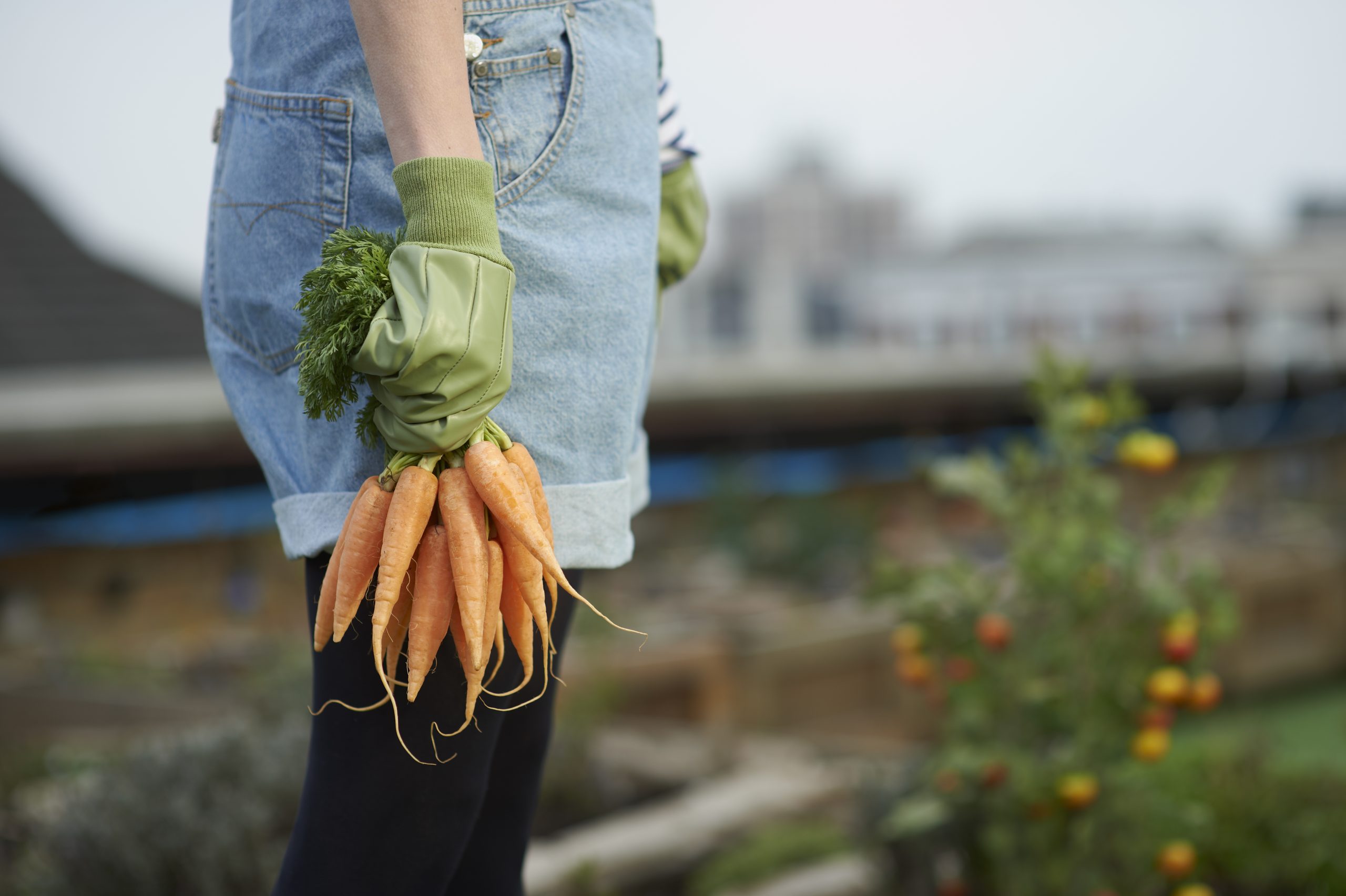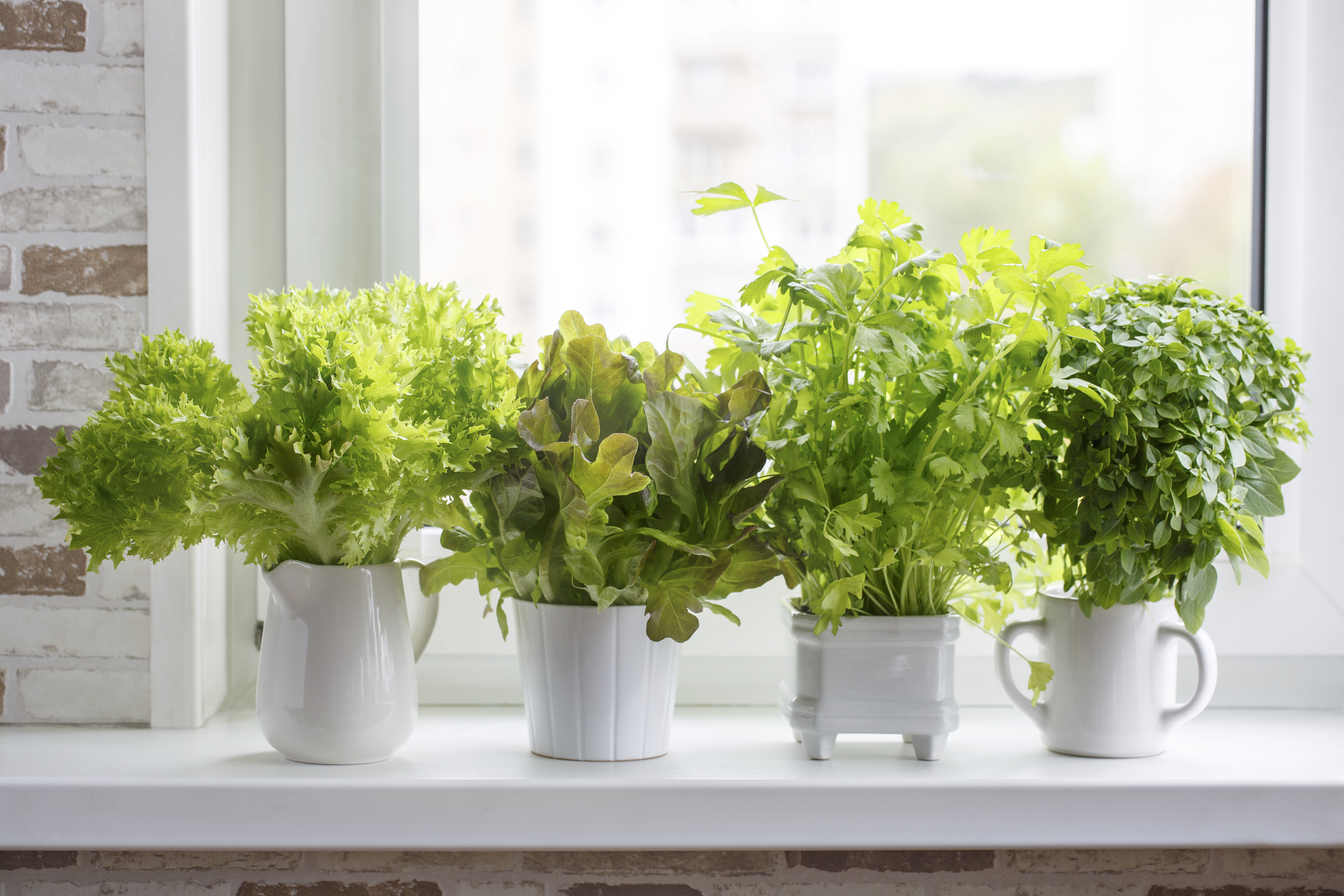Seven vegetables you can grow from scraps and cuttings
Who needs a greengrocer?


Running low on fresh vegetables? Making your meals go even further is easier than you think. Here are seven vegetables you can grow from scraps.
Throwing away scraps or ends instead of growing our own vegetables? "Just add a little sunshine, water and TLC," says food waste expert Emilie Vanpoperinghe, co-founder of Oddbox. "And, before you know it, you’ll have a much more sustainable way of eating that provides you with delicious vegetables. Plus, it’s all from something that you might’ve otherwise have thrown away." Here’s how…
1. Growing lettuce from scraps
“Place the lettuce stem in water making sure it covers no more than two thirds. Then leave in a spot with plenty of light,” says Emilie. “Fill up and change the water when it needs (typically if it gets a bit cloudy). If you have the space then transfer the little shrub to soil, which will allow for better growth. But, if a window-sill and empty jar is all you’ve got, this’ll do just fine.” Top tip for success? “Ensure you cut from the outer leaves and leave a small inner core,” says Emilie. “Then just keep eating and regrowing for as long as your lettuce allows you.” Expect new vegetables in: 2-3 weeks
2. Growing spring onions from scraps
Giving meals a flavour with spring onions has never been easier. “Leave about an inch from the roots, and pop them in a shallow glass of water so that the tops aren’t submerged,” says Emilie. “Change the water every few days and watch the green shoots continue to grow.” Expert trick? “Cut what you need from the tops, and the spring onions will grow for as long as you take care of them,” says Emilie. Expect new vegetables in: 1-2 weeks
3.Growing onions from scraps
“Leaving about a half-inch up from the roots of the onion attached, place it directly in a small pot of soil. Cover it with a layer of soil, keeping it in a sunny spot,” says Emilie. “Water it daily to keep the soil moist, and you’ll begin to see the spring onion shoots come up in a few weeks.” Expect new vegetables in: 2-4 weeks
READ MORE: Seasonal food calendar

4. Growing coriander, basil and other cut herbs from scraps
Adding flavour to meals has never been easier. “Ensure that there’s around 2-3 inches left of the stem of your herbs. Then place them upright in a tall glass of water. The new roots should start to sprout after the first week. After then, you can transfer them into a small pot of soil for your windowsill, making sure not to over water it,” says Emilie. “Once the herbs have begun flourishing, never pick out more than a third of the plant.” Expect new herbs in: 2-3 weeks
GoodtoKnow Newsletter
Parenting advice, hot topics, best buys and family finance tips delivered straight to your inbox.
5. Growing celery from scraps
Celery leftover? “Leave around 1-2 inches from the base of celery, and place down in a small bowl or glass of water in a sunny spot,” advises Emilie. “After the first few days, you’ll see new leaves begin growing from the middle, and roots begin to grow. Transfer the celery shrub to a small pot of soil. Make sure to keep it in as much direct sunlight as possible each day. And water it generously for it to grow its stalks to full length.” Expect new vegetables in: 1-3 weeks
6. Growing leeks from scraps
Love a leek? Then you’re in luck. “Leeks regrow much like celery and spring onions, the only difference is the sheer size of the leeks!” says Emilie. “Leaving 1-2 inches of the leek’s root ends, soak them root-first in a shallow glass/container of lukewarm water. Place them on a sunny windowsill, and change the water fairly frequently. You’ll begin to see the leeks regrow from the middle within the first week.” Expect new vegetables in: 1-2 weeks
7. Garlic shoots
“Plant your garlic cloves with their roots facing down in a small pot of potting soil,” recommends Emilie. “Sit in a spot with lots of direct sunlight, and you’ll begin to see the beginnings of the new shoot in a few days. Alternatively, pop garlic that has sprouted slightly into a shot glass of water. These tops will continue growing and can be eaten just like spring onions.” Expect new vegetables in: 1-2 weeks

Faye M Smith is a Senior Health And Lifestyle writer working across Woman & Home, Feel Good You, Woman’s Own and Woman magazine. Having gained an NCTJ postgraduate diploma, Faye has worked for 15 years in journalism, covering a range of lifestyle topics for companies including the BBC, Press Association, News UK and Hachette.